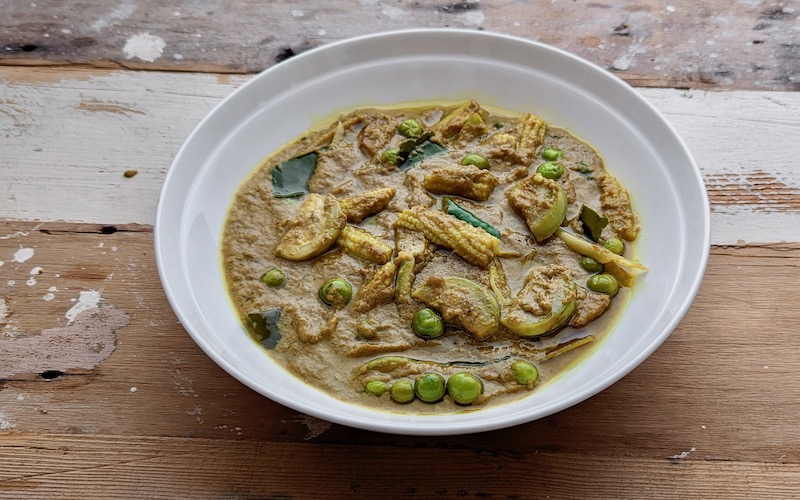

Thai cuisine has many different curries, usually described by their colour, including green, red, yellow and orange. Green curry, typical of the central plains of Thailand, is probably Australia’s most common Thai dish. It’s hot, salty and more pungent than many other Thai curries, and often contains bitter vegetables like apple eggplants for balance. Thai curries are versatile, once you have a good curry paste as a base you can add almost anything. I make my Thai green vegetable curry a little drier than a typical green curry of chicken, but you can add more coconut milk if you prefer it saucier. Use any Asian vegetables you like including sugar snap peas, snake beans and leafy greens, just cut into bite-sized pieces and add them according to how long each will take to cook. I love the contrast of bitter, crunchy pea and apple eggplants and add fresh baby corn too when I find it at my Asian grocer. My recipe for Thai green vegetable curry is inspired by one David Thompson taught me (see video below). Here’s what he told me about getting just the right look, consistency and flavour: “Green curry should have a nice dappling of split coconut oil glistening across the surface, however if the cream splits too much, the oil can mask the other underlying flavours. If there’s too much oil, add a little cold water and stir vigorously to re-emulsify the fat.” David also taught me that, when making green curries with meat, you can be a bit more robust with the seasoning than with vegetable curries. So if you use this recipe for a chicken or beef curry, be a little more generous with the pinches of coriander, cumin, pepper and chilli. Thai curries are always seasoned to the taste of the individual cook anyway. Commercial curry pastes vary greatly in strength. If you use one for this recipe rather than making your own, you’ll need between ¼ and ½ cup depending on the intensity; Thai brands tend to be strongest. I love a glass of Head rosé from the Barossa Valley with this Thai green curry. Behind its pale exterior lies plenty of oomph to meet the curry flavours head-on.
Serves 2
Share page on:







